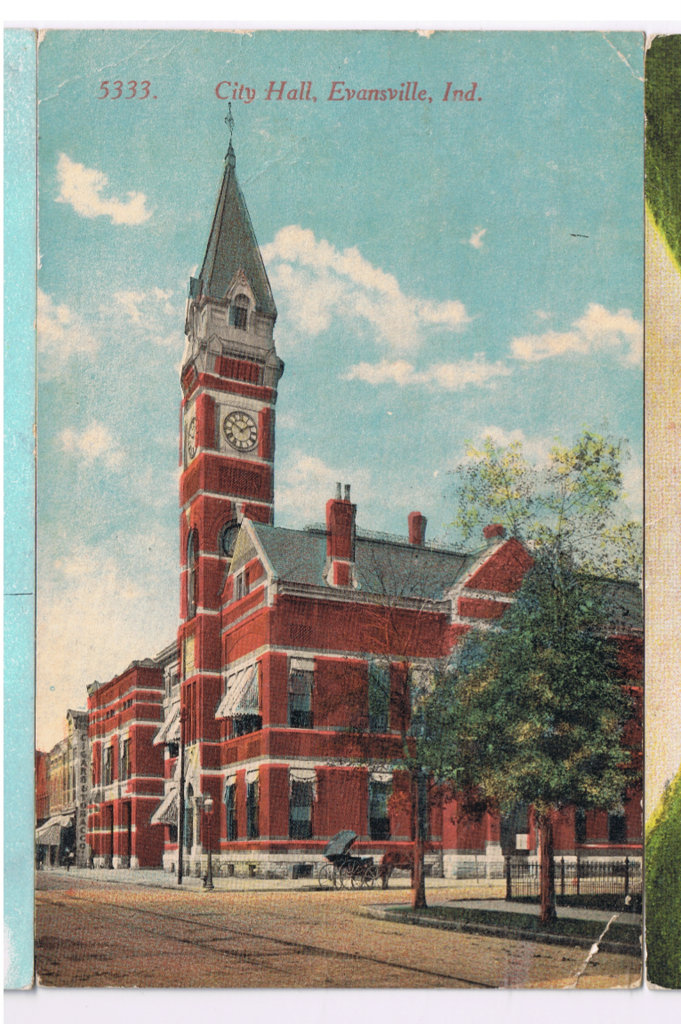Sample postcards - Postcard History Series: Evansville
These postcards were selected for use in the book. The text is taken verbatim from the pages.
| Postcard
| Caption
|

| City Hall, Evansville, Ind.
Evansville’s City Hall was built in 1887 when the city was experiencing rapid growth. Built at the corner of 3rd Street and Walnut Street, the building donned a clock tower that dominated the skyline. In the 1920s an addition along Walnut St was built, and part of the tower was removed. The building was vacated when the Civic Center opened in 1969 and torn down in 1971 for parking
(Engler family collection)
|

| Bayard Park, Evansville, Ind.
When part of the East Side was annexed in the late 1890s, a middle-class residential development was planned around Bayard Woods. Bayard Park, which was named after prominent Evansville banker Samuel Bayard, was established in 1901 when his widow donated ten acres to the city. In 1912 the East Branch Library was built adjacent to the park. Today the park is the center piece of the Bayard Park Historical District.
(Courtesy of Evansville Vanderburgh Public Library Digital Archive.)
|

| Campbell St. Public School, Evansville, Ind.
Campbell Street School was built in the Culver neighborhood in 1875. A fire started by a lightning strike burned the school down and a new building (shown here) was completed in 1905. The school was renamed Culver in 1933 after principal John M. Culver. The school was still recognizable after several additions, but when a new building was erected adjacently in 1982 the old city school was razed soon after.
(Courtesy of Evansville Vanderburgh Public Library Digital Archive and the Topper family.)
|

| Franklin St., Looking East from Bridge, West Side, Evansville, Ind.
Here is a look at the original steel bridge on Franklin Street looking east from Pigeon Creek. The bridge served as a link to the isolated West Side. The Armstrong Brothers Furniture factory is at left, and the Franklin House hotel, presently being converted into Tin Man Brewing Company, is on the right. This bridge was replaced with the present concrete one in 1930s.
(Engler family collection)
|
Return to book home